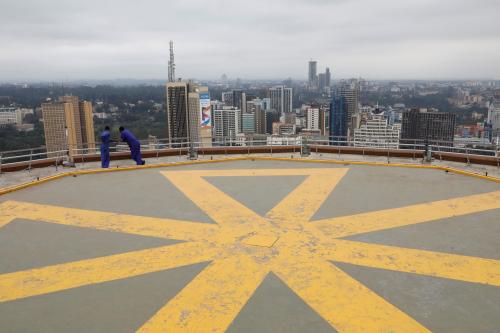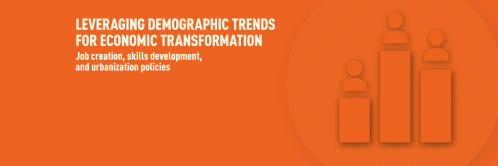At the beginning of 2020, the Africa Growth Initiative at Brookings launched its annual Foresight Africa publication. This year’s special edition highlights the accomplishments of past years and strategies for the upcoming decade, 2020-2030. The third chapter, Leveraging demographic trends for economic transformation: Job creation, skills development, and urbanization policies, discusses the mismatch between demographic trends and job creation on the continent. The chapter includes a discussion of challenges and strategies to improve the quality of living in Africa’s rapidly growing cities.
In his essay, Somik Lall, global lead on territorial development solutions and lead economist for sustainable development in Africa at the World Bank, discusses the need for African countries to fully capitalize on the opportunity of urbanization. Urbanization has the potential to boost productivity by triggering economies of scale and specialization, as well as knowledge spillovers. However, in Africa, urbanization has been driven by a lack of opportunity in the countryside, rather than by the strength of urban economies. As a result, many urban dwellers do not have sufficient accumulated savings to make significant investments in housing and have been forced to live in slums.
Figure 1 shows the extent of urban slums in Africa: As the continent has rapidly urbanized, the number of people living in urban slums doubled from 100 million in 1990 to 200 million in 2014, although the share of urban population living in these settlements declined from 70 to 56 percent over this time period. The share living in slums, however, has not declined as rapidly as it has in South and East Asia, and is 25 percentage points higher than the second-worst region, South Asia.
Figure 1. Number of people and share of urban population in slums
Citizens living in urban slums face worse conditions than those living elsewhere in cities, with lower access to piped water, flush toilets, and electricity. Figure 2 shows the stark differences in access to services inside and outside of slums in Nairobi and Mombasa, two Kenyan cities. Insufficient access to clean water and sanitation in slums is linked to poor health outcomes, and limited access to electricity can reduce the productivity of workers and businesses, limiting economic opportunity. Lall argues that, in order to make cities work for development, African policymakers will need to raise agricultural productivity and improve the rural sector, adopt a well-functioning land market, enhance land-use planning, and embrace the benefits of new technologies.
Figure 2. Access to services inside and outside of slums
The Brookings Institution is committed to quality, independence, and impact.
We are supported by a diverse array of funders. In line with our values and policies, each Brookings publication represents the sole views of its author(s).









Commentary
Figures of the week: Service delivery in Africa’s urban areas
February 27, 2020